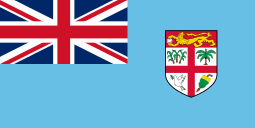Daewoo Precision Industries K3
| Daewoo Precision Industries K3 | |
|---|---|
|
Daewoo Precision Industries K3 | |
| Type | Light machine gun |
| Place of origin | South Korea |
| Service history | |
| In service | 1991–present |
| Used by | See Users |
| Wars | |
| Production history | |
| Designer | |
| Designed | 1978–87 |
| Manufacturer | |
| Produced | 1988–present |
| Specifications | |
| Weight | 6.85 kg (15.10 lb) |
| Length | 1,030 mm (41 in) |
| Barrel length | 533 mm (21.0 in) |
|
| |
| Cartridge | |
| Action | Gas-operated, rotating bolt |
| Rate of fire | 900 rounds/min |
| Muzzle velocity | 915 m/s (3,002 ft/s) |
| Effective firing range |
800 m (K100) 460 m (KM193) |
| Maximum firing range |
3,600 m (K100) 2,650 m (KM193) |
| Feed system | 200-round disintegrating-link belt, 70-round box magazine (rare) or 30-round NATO STANAG magazine |
| Sights | Iron sights |
The Daewoo Precision Industries K3 is a South Korean light machine-gun. It is the third indigenous firearm developed in South Korea by the Agency for Defense Development, following the Daewoo Precision Industries K1 submachine gun and Daewoo Precision Industries K2 assault rifle. It is manufactured by Daewoo Precision Industries, current S&T Motiv.[1] The K3 is capable of firing both 5.56×45mm NATO and .223 Remington rounds like the K2 assault rifle. The K3 light machine gun entered service since 1989, replacing M60 machine gun from frontline use.[2]
Description
The K3 is a light machine gun resembling the FN Minimi and uses a standard 5.56×45mm NATO cartridge. Its greatest advantage is that it is lighter than the M60 and can interchange cartridges with both the K1A and K2. The feed can come from either a 30-round box magazine or a 200-round metal link belt. It can be used with a bipod for the Squad Automatic role, and fitted with a tripod for sustained fire support.
The rear sight is adjustable for elevation and windage, and the foresight can be adjusted for elevation for zeroing. The barrel has a built-in carry handle for ease of changing the barrel. The gun is gas operated, with a rotating bolt.
The weapon system was not designed for customization, due to the fact that most soldiers of the South Korean military will not see extended use of their weapons.
By 2015, ROK forces were looking to obtain a new LMG, as the K3 was suffering from age and reliability issues. S&T Motiv is attempting to get win the contract by modernizing the K3 with a side-folding adjustable stock, an integral MIL-STD-1913 rail on feed cover, detachable side and underside rails, a carbon fiber heat shield over barrel, an improved muzzle brake/flash hider, folding iron sights, and an upgraded feed system. The same improvements would also be applied to the shorter "Para" version.[3]
Foreign sales
One example of the K3 was purchased by South Africa in 2006, and two examples were purchased by Thailand in the same year.[4] A controversy broke out 2007 in the Philippines when the country's Armed Forces initially selected the FN Minimi rather than picking the K3 or the 5.56 mm Ultimax from Singapore. The AFP's Modernization Program was attacked for showing favoritism towards a Western firearms company over Asian arms manufacturers.[5]
Ultimately, 6,540 K3s 5,883 K3s were acquired by the Philippine Army for their SAW requirement.[6] 5,883 units were first shown in public on February 18, 2008, together with 603 newly delivered Kia KM-450 trucks.[7]
Variants
- XK3: Experimental prototype.
- K3: Standard mass-produced variant.
- K3Para: Shortened version of K3 with RAS and minor modification.
Users
-
 Bangladesh [8]
Bangladesh [8] -
 Colombia: 400 K3s acquired in 2006.[4]
Colombia: 400 K3s acquired in 2006.[4] -
 Fiji[9]
Fiji[9] -
 Guatemala[10]
Guatemala[10] -
 Indonesia: 110 K3s acquired in 2006, and additional 803 in 2011.[4][11] Used by the Komando Pasukan Katak (Kopaska) tactical diver group and Komando Pasukan Khusus (Kopassus) special forces group.[12]
Indonesia: 110 K3s acquired in 2006, and additional 803 in 2011.[4][11] Used by the Komando Pasukan Katak (Kopaska) tactical diver group and Komando Pasukan Khusus (Kopassus) special forces group.[12] -
 Republic of Korea: Standard squad automatic weapon. Planned to replace with K3Para.[13]
Republic of Korea: Standard squad automatic weapon. Planned to replace with K3Para.[13] -
 Philippines: Philippine Army acquired 6,540 units were acquired in 2008.[7]
Philippines: Philippine Army acquired 6,540 units were acquired in 2008.[7]
See also
References
- ↑ "Business Outline, Defense Business". S&T Daewoo. Retrieved 2010-07-01.
- ↑ http://stoo.asiae.co.kr/news/stview.htm?idxno=2011051816525411562
- ↑ ADEX 2015 - SAdefensejournal.com, 5 August 2016
- 1 2 3 Daniel Watters. "The 5.56 X 45mm: 2006". Gun Zone. Retrieved 2009-05-23.
- ↑ Archived June 24, 2004, at the Wayback Machine.
- ↑
- 1 2 Philippine Army. "Army Troopers Newsmagazine Vol.2 No.9" (PDF). Philippine Army. Retrieved 2010-06-20.
- ↑ http://www.bdmilitary.com/forces-equipment/small-arms/light-machine-guns/k3-light-machine-gun/
- ↑ http://gall.dcinside.com/list.php?id=gun&no=33393
- ↑ http://biz.chosun.com/site/data/html_dir/2011/08/03/2011080300418.html
- ↑ http://www.fnnews.com/view?ra=Sent0601m_View&corp=fnnews&arcid=111101143730&cDateYear=2011&cDateMonth=11&cDateDay=01
- ↑ "Kopassus & Kopaska - Specijalne Postrojbe Republike Indonezije" (in Croatian). Hrvatski Vojnik Magazine. Retrieved 2010-06-12.
- ↑ http://world.guns.ru/machine/mg27-e.htm
Further reading
- Jane's Infantry Weapons. 2002.
External links
| Wikimedia Commons has media related to Daewoo K3. |

